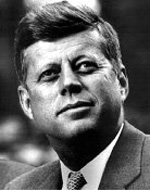Boone's Lick State Historic Site [MO]
In 1804, Lewis and Clark reported the presence of many saltwater springs in the area that now comprises Howard, Cooper, and Saline counties. The largest of these salt springs was the Boone's Lick. The area around this spring was ideal for settlement and for many years "Boone's Lick Country" was a primary destination for pioneers moving west. Nathan and Daniel Morgan Boone, sons of famous frontiersman Daniel Boone, formed a partnership with James and Jesse Morrison in 1805 to produce salt. Brine water was poured into iron kettles and heated to boiling on a stone furnace. As the water evaporated, salt crystallized in the bottom of the kettle. The salt was shipped by keelboat on the Missouri River to St. Louis. Salt, which was indispensable at the time for preserving meat and tanning hides, was produced at the site until approximately 1833. Today, the 52-acre site features picnic facilities and a short trail that winds its way to the spring site, where wood remnants of the salt works and an iron kettle are still visible. Outdoor exhibits interpret this unique saltwater environment and center of frontier industry. Artifacts from the salt manufacturing industry were excavated at the site, and some are on display at the Arrow Rock State Historic Site visitor center in Arrow Rock.
The site offers exhibits and occasional recreational and educational events.


